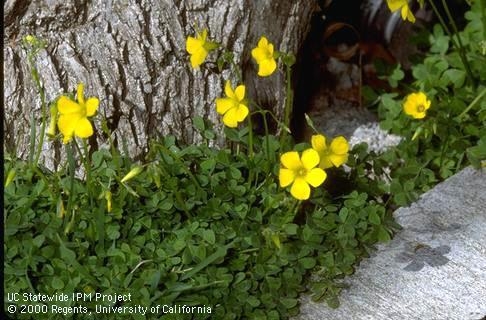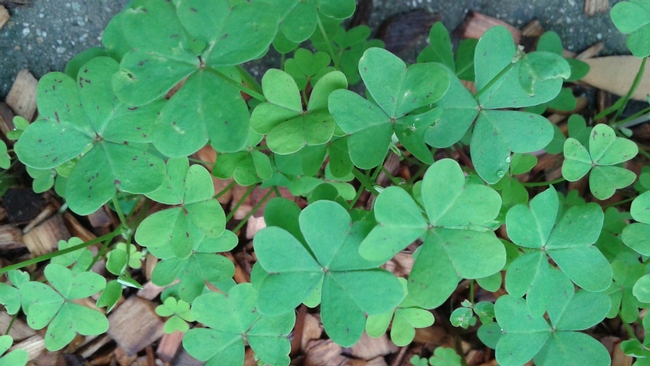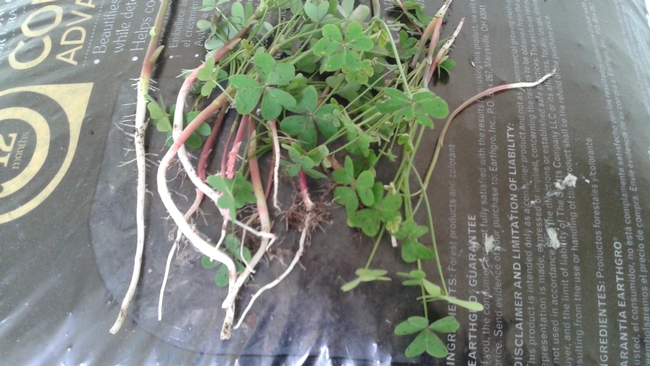Advice for the Home Gardener from the Contra Costa Master Gardeners' Help Desk
Client's Problem and Questions:
Oxalis pes-carpae in bloom
Advice from the CCMGs' Help Desk
Oxalis pes-carpae ... typical leaves
"Researchers around the world are investigating approaches for controlling Bermuda buttercup. Some suggest covering infestations with stiff cardboard, then covering the cardboard with a thick layer of organic mulch to kill the plants and weaken the bulbs, making them less capable of competing with desirable plants. Keep the mulch on the infestation until the mulch and cardboard have rotted, then plant competitive ornamentals into the soil-mulch mixture."
Oxalis pes-caprae "roots"
The Contra Costa Master Gardener article, "Oxalis: From Ornament to Nuisance" will give you even further insight on controlling Oxalis per-caprae. http://ccmg.ucanr.edu/files/83817.pdf
Finally, we also note that several of your submitted photos show possibly another noxious weed growing in your garden. Although not able to confirm with you at this time, it appears to be Himalayan Blackberry (Rubus armeniacus). If not controlled, this rather invasive wild blackberry will take up where your Oxalis stops in taking over your yard. The UC Pest Note on Wild Blackberries (http://www.ipm.ucdavis.edu/PMG/PESTNOTES/pn7434.html) provides information on identification and management that should be of use to you. My experience is that it is a very tenacious weed and may require more than a few years to bring it under full control.
I know that the management of these weeds is a big challenge and wish you all the best in dealing with it!
Contra Costa Master Gardeners' Help Desk
Note: The Contra Costa Master Gardener Help Desk is available year-round to answer your gardening questions. Except for a few holidays, we're open every week, Monday through Thursday for walk-ins from 9:00 am to Noon at 75 Santa Barbara Road, 2d Floor, Pleasant Hill, CA 94523. We can also be reached via telephone: (925) 646-6586, email: ccmg@ucanr.edu, or on the web at http://ccmg.ucanr.edu/Ask_Us/



